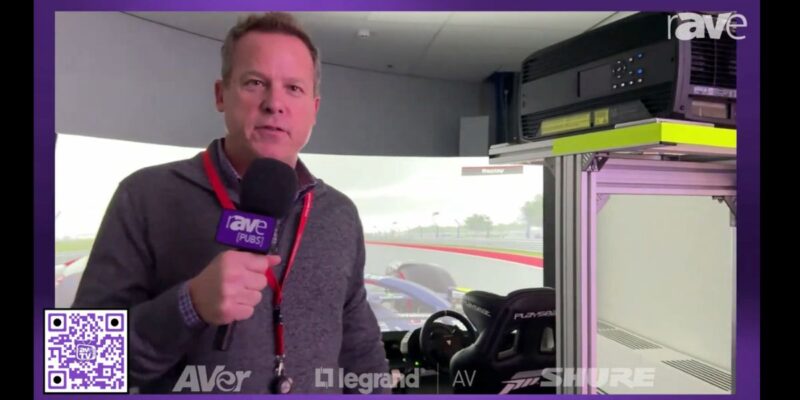Smart Infrastructures are Changing Control Room Visualization Needs
By Peter Bussens
Director of Segment Marketing, Barco Control Rooms
Growing urbanization presents new demands
 Today, we are finding ourselves in the midst of a rapid migration of society from the rural countryside to bustling cities. Only 200 years ago, most of the world’s population lived in the outlying areas, with only three percent calling themselves city dwellers. Fast-forward to 2011, and a full fifty percent of citizens now live in cities, with that number expected to increase to 60 percent by the year 2025.
Today, we are finding ourselves in the midst of a rapid migration of society from the rural countryside to bustling cities. Only 200 years ago, most of the world’s population lived in the outlying areas, with only three percent calling themselves city dwellers. Fast-forward to 2011, and a full fifty percent of citizens now live in cities, with that number expected to increase to 60 percent by the year 2025.
But it’s coming at a price. As a result of the rapid growth and urbanization of society, traffic is projected to increase to more than 1.7 billion vehicles on the road while energy consumption could skyrocket by 50 percent by the year 2025. More people, consuming more resources, are generating massive amounts of data which needs to be managed, analyzed and acted upon to safeguard the continuous delivery of energy, utilities and communications services, and to ensure quick and effective response to all law enforcement, security or emergency incidents.
The rise of smart infrastructures
In the near future, smart streets will be equipped with traffic lights that continuously receive traffic data on density and flows to optimize circulation, while on-board navigation systems direct drivers to the nearest parking spaces. Smart electrical grids, featuring smart meters to monitor energy consumption at the granular level, will cleverly manage the type and amount of power distribution based on numerous factors, adjusting to changing supplier and consumer behavior. And intelligent security cameras, many with built-in analytics, will be capable of precise automobile identification and even face recognition to track suspicious behavior.
However, while information is power — it’s also a challenge when it comes to managing and turning it into actionable knowledge. Today’s computer systems can capture and analyze a plethora of mobility, energy and communications data from smart, coordinated infrastructures which automatically execute actions based on inputs from thousands of sensors providing information on a continuous, real-time basis. Decision-makers must have instant access to this data to effectively and efficiently manage our municipal infrastructures and ensure public safety, including the ability to quickly react to anomalies.
The challenge of Big Data arrives
All of this new data is amassing into what is becoming commonly known as “Big Data.” Gartner defines Big Data as “high-volume, -velocity and -variety information assets that demand cost-effective, innovative forms of information processing for enhanced insight and decision making.”
The growing abundance of Big Data is truly both a blessing and a curse for entities charged with monitoring and managing a city’s public infrastructures. In essence, the more data that is available, the better solutions will result. But it requires effectively managing this huge volume of information coming from many difference sources and turning it into meaningful knowledge. The objective: to create a robust information management solution that can empower those charged with managing these resources to make faster, better decisions.
In the dynamic control room environment, the “velocity” aspect of Big Data is the most critical factor because of the real-time demands of public infrastructures and the need for operators to correlate a ubiquitous, ongoing flow of data to make decisions that positively impact operational efficiency and public safety. Harnessing and moving data as quickly as possible from inception to decision is the biggest challenge control room operators face in this new era of smart infrastructures and Big Data.
Control rooms must evolve
Clearly, the evolution of Big Data necessitates a paradigm shift in control room operations, as the sheer volume of information would be daunting for control rooms using the traditional operational model, which employs user-centric approach to monitoring requiring constant human supervision of and interaction with the technology. For example, in the typical security operations center, control room staff watches feeds from dozens of surveillance cameras simultaneously and decide which situations warrant action or intervention. A great deal of risk falls upon the operator who must be constantly tuned to all of these monitors and make subjective decisions based solely on visual information. However, because of the limited powers of human observation, this model isn’t sustainable in the brave new world of Big Data.
In the future, public infrastructure managers must adopt systems that can efficiently speed information along a continuum of image and data capture tools that automatically analyze the data at a granular level using sophisticated software programs. In this new control room environment, data travels through the network, is refined and optimized for understanding, and then, and only then, presented to a control room operator in a meaningful form that can be used to take decisive action. This is where the need for flexibility is paramount: operators need to be armed with the ability to generate optimized perspectives (a grouping of any type of sources providing situational awareness), creating, editing and sharing views on the fly to adapt to changing circumstances to make the best decisions.
Collaboration is key
In the modernized control room of the future, all key stakeholders should have access to the critical tools that enable effective collaboration, such as the ability to create, combine and share various user perspectives of data, images and video. This is because with increased risk, collaboration becomes even more important, requiring multiple functions and echelons within an organization to assess information and make decisions in real time. Systems should also include built-in security protocols that regulate access to information, ensuring visibility of sensitive information only by the appropriate individuals.
Networked visualization can help
Since Big Data significantly increases the scale and complexity of control room visualization needs, today’s operations centers need a system that can efficiently support the velocity aspect of Big Data, be easily adaptable, and facilitate collaboration.
The optimum control room solution should feature an “any source, anywhere” networked visualization platform, one that can handle unlimited sources and outputs to deal with the abundance of data and enable collaborative decision-making across multiple functions and geographies. This means presenting information wherever it is needed, not just on the display wall but where decisions are made. This entails the ability to correlate information from many different sources into an actionable perspective — a personalized and dynamic view appropriate to each individual’s different roles and tasks.
Recording capabilities are also an essential component of a networked visualization platform. The ability to record events displayed on the wall, including how operators react and solve incidents, can help control room administrators optimize their workflows as well as aid in mission debriefing sessions. Moreover, recorded activities can also serve a useful purpose in re-training current staff and training new staff when organizational changes occur.
Build it and they will come
The chief objectives in creating a next-generation visualization platform are to (1) build it upon an IP-centric infrastructure to facilitate expansion and migration, (2) design it using an open API with compatible machine-to-machine interfaces, (3) ensure easy integration with myriad internal/external applications.
Important considerations that organizations should keep in mind when implementing a modernized control room visualization solution include:
- Equipped with the right perspectives to efficiently capture, analyze, manage and utilize Big Data to make smart decisions in real time
- Pre-defined, standardized and ad-hoc perspectives which correlate disparate sources and bring meaningful context to the data
- Specified user roles and access control for personalized views and appropriate access rights
- Video wall and source recording capabilities for training and debriefing purposes, as well as archival
- Input and output nodes that can be easily added to adapt to changing needs
Armed with this new robust control room of the future, organizations can mount an offense to successfully manage the wave of big data and varying demands of smart infrastructures.
Peter Bussens is director of segment marketing for Barco control rooms, and currently guides the company’s worldwide market development and long-term business strategies in the control rooms and virtual reality markets. Bussens has been with Barco for more than 14 years, holding various positions in market development and product management. During this time, he has been deeply involved in bringing to market Barco’s visualization products and control room software for the broadcast, telecommunications, public utilities, process control, traffic control, surveillance and command & control applications industries, developing a profound understanding of the visualization needs in 24/7 mission critical environments.





